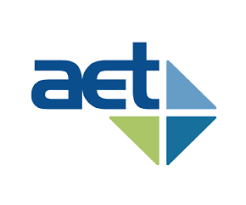The Regional Sustainability Initiative works with companies across Waterloo Region to empower them to meet their sustainability goals. We collaborate with organizations like yours to set voluntary targets to reduce your greenhouse gas (GHG) emissions, waste and water impacts, as well as increase your waste diversion.
Every organization’s sustainability journey is unique. Our milestones provide a customized approach for organizations of varying sizes and industries. So follow along with our Target Setting blog post series and learn how our members set and achieve sustainability targets.
Are you a business curious about setting a Waste target?
In this last post of the series, we’re digging through the process of setting waste targets in the Regional Sustainability Initiative.
With recent changes to our target-setting framework, your organization now has two types of waste targets to choose from:
- waste diversion target
- Targets that track the percentage of an organization’s waste that is diverted from landfills. This target plan focuses on dealing with organic waste, recyclable waste such as paper and plastic products, and other waste alternatives that can be disposed of by using sustainable methods.
- waste reduction target (available to members as of June 1, 2021)
- Targets that focus on reducing an organization’s total waste production by transparently tracking this on an annual basis. This new target plan tracks an organization’s progress and aids them in creating new strategies to lower their waste output.
If you are an ambitious organization that wants to go the extra mile, you can even set both types of targets.
Remember: waste sources differ for various industries and businesses. For added flexibility in our waste reduction targets, we categorized these sources into waste streams which are accounted for when reporting an organization’s total waste. These streams may include landfill waste, paper products (e.g. from packaging), containers (e.g. plastic, glass, metal), organic waste, durable goods (e.g. electronics), construction/renovation/demolition waste and hazardous waste. Whether or not a waste stream is considered mandatory or optional is dependent on what percentage that waste stream represents out of the total waste produced by the organization, this threshold varies by organization size and industry.
Organizations that choose a Waste Reduction Target select from either an absolute target or an intensity-based target, similar to our GHG and water reduction target-setting plan:
Absolute targets focus on the total waste produced by an organization.
Intensity-based targets are specified objectives that express an organization’s waste production per unit of a particular growth factor or area of output. Intensity metrics can include: waste per full-time employee
Absolute targets account for the overall waste impacts of an organization, while intensity-based targets focus on particular measures of waste impacts based on the chosen growth factor.
Ready to set a target?
Using the 3 years of waste baseline data collected, we will create realistic and ambitious target scenarios for your review. Members pledge a reduction commitment over a 10-year target period as a Pledging Partner. Pledging Partners sign a non-binding agreement to affirm their commitments and are assigned a Pledge Level of Bronze, Silver or Gold. Our framework categorizes these levels based on your percentage of commitment to increasing your waste diversion from landfills as per the table below. Waste Reduction Target Pledge Levels will be announced upon formal launch June 1 2021.
| Bronze | Silver | Gold | |
| Waste Diversion Target* | 60-69% | 70-79% | 80-100% |
*Note: The percentages differ for GHG Targets and Water Targets. See other series’ posts for details
Getting started with targeted reduction projects:
Once your pledged target is finalized, taking the first step towards reductions can feel overwhelming. Within the program we have created “The Idea Book” a member-only resource that provides over 300+ inspirational diversion or reduction projects as well as references to other members who have completed similar projects. In addition, our reporting framework offers annual reporting of progress against targets as well as tailored recommendations on how to further reduce emissions.
Current Pledging Partners:
Throughout the 10-year pledge Sustainable Waterloo Region provides ongoing support, coaching and resources to assist with your waste impact plan. There are currently 7 Pledging Partners actively working towards waste diversion pledges. Throughout their sustainability journey we celebrate successes and achievements.
Whether you are an up-and-coming rookie, an inspiring sustainability leader or somewhere in-between, our initiative acknowledges members by featuring their stories and latest projects on our blogs, social media accounts, or in our annual report where target-hitters are announced!
Here are our most ambitious Pledging Partners and their waste targets to get you inspired:

Gold Pledging Level | 90% Waste Diversion Target

Gold Pledging Level | 89% Waste Diversion Target
Gold Pledging Level | 84% Waste Diversion Target
If you are a current member of our initiative and are interested in setting one of our waste targets or want to re-discuss your current waste target plan with our newly added options, feel free to contact us and we will book a workshop with you!
As for new organizations who are looking to become a member, reach out to us! We’ll be happy to get you started in the target-setting process!
Interested in learning more? Check out “Water, Waste & GHG’s: Setting targets with the Regional Sustainability Initiative” a webinar on the target setting process hosted on March 24th at 10am.
